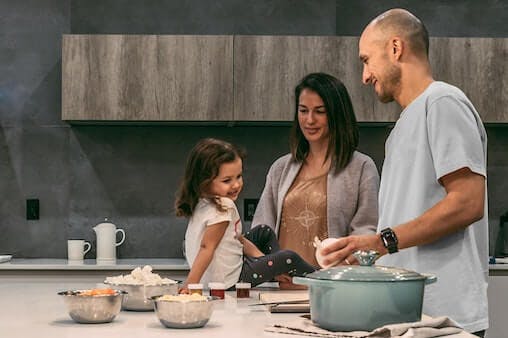Helping Kids Eat Smart

Encourage your children’s teachers to teach the class at least a little about good nutrition at the beginning of each year. If eating well is confirmed by this outside authority and is tied in with success at school, it will help.
Connect with the parents of your child’s class. Encourage parents to band together to help healthy food be the norm for that class. Make a list of the kinds of foods that would be great in lunches and the kinds of foods to avoid. What’s cool in a particular classroom is more important to kids than what’s cool nationally.
When you eat out, try to identify (together) the most healthy and least healthy choices on a menu.
Make your kids’ lunches the coolest. Use a wide variety of foods your child likes. Don’t let them get boring.
Try fortune vegetables instead of fortune cookies. I can remember being told, “Don’t play with your food.” I’m telling you the opposite. Learn to play with your children’s food. You’ll have a great time and make a big difference for them.
To make dietary changes; information should be presented about short-term consequences, for teens it can be particularly related to appearance, athletic ability, popularity, and enjoyment of life. For instance, adolescents can be told, “Calcium will help you grow taller during your growth spurt. It also makes you measurably stronger. Iron will help you do better on tests and stay up later without being as tired. Carrots will make you a better driver, and will make me more comfortable lending you my car,” and so on.
When you do speak of long-term consequences, link them to the things that teens care about — particularly body image. For instance, “Have you ever seen old men and women that are bent over when they walk? Have you seen old men and women that are strong and active? One of the biggest differences was how much calcium they got every day when they were your age…” Teach, but don’t nag.
Make good food fun for your teen. Have their friends over for a healthy cookout. When I was younger, we had a vegetable party. Different vegetables were on numbered plates spread throughout the house. Each guest had a score card, on which they tried to identify the vegetables (some were quite unusual). There was a taste test (vegetables were rated for appearance, aroma, texture, and flavor), and awards were given to the best (and worst) vegetables. We also tried to pick which person (celebrity or acquaintance) most reminded us of each vegetable and why.


